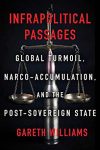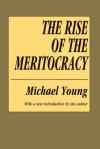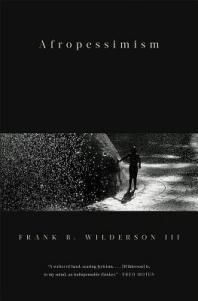Why do we work? The obvious answer, for most of us, is that we do it for the money. Yet in acknowledgement of the fact that structural unemployment is (apparently) taken for granted, and that not everyone can work, at least not all the time, Western democracies provide economic assistance to the unemployed. But the level at which such benefits are set is designed to ensure that they are not to be seen as more than a fallback option. Still, these days recipients often have to show that they are actively seeking employment, and that they are not too fussy about the kinds of employment they may be offered, all of which perhaps betrays an anxiety that money is not motivation enough. Indeed, the jobless are regularly stigmatized, and there is a whole public discourse surrounding “benefits cheats” or “welfare queens” and the like, a more or less mythical (under)class of people who supposedly prefer not to work, or who (allegedly) put almost as much effort into not working as others put into negotiating the rat-race of paid employment. Though proposals for a “universal basic income” are increasingly popular, for diverse reasons, both on the Left and on the Right, one of the major obstacles that they face is the fear that a living wage paid to all would reward, and perhaps even encourage, laziness. Why would anyone work if they did not have to?
People work, or persuade themselves that they work, for many other reasons beyond the purely economic. Compensation comes in many forms. Some feel a sense of vocation or a desire to be of service, others pursue status, and many find–or at least seek–pride in whatever they happen to be doing. There can no doubt be satisfaction in a job well done, whether it be a wall well built, a meal well cooked, or a class well taught. There is surely something unbearable about seeing the world in unblinkingly Marxist terms, about agreeing that wage labour is simply exploitation and alienation, which is why most of us are hesitant to believe that, as workers of the world, we have “nothing to lose” but our chains. It is less a question of ideology than (more viscerally) a matter of affect, habit, and even our sense of self. Many of us spend so much time at work, or more fundamentally and unconsciously have invested so much in molding ourselves and our sensibilities to fit in with and progress within the workplace, that it is not clear who or what we would be without our job titles and all the routines that accompany them. Hence, however much we may complain about our conditions of labour, our bosses or colleagues or lack of perks, unemployment (and even retirement) can be felt as an almost existential crisis.
Yet this link between employment and identity is breaking down, and the crisis is upon us, imminently at hand. The assumption of a job for life is, for all but a tiny minority, no more than a distant memory. In place of long-term specialization and the accumulation of entrenched habits and embedded knowledges in durable institutions, we are now enjoined to be flexible and prepared to endlessly retrain for ever-new opportunities in increasingly transient and precarious conditions. The ideal type in the “new economy” is the “start-up” firm or the “pop-up” shop, and we are sold as a form of freedom the uncertain hours and unpredictable pay the go with becoming self-employed contractors dependent on Internet platforms such as Uber and the daily battle for “likes” and positive endorsements. As such, a new relationship between employment and identity arises, but one that has constantly to be renewed as we become, in Michel Foucault’s words, “entrepreneurs of the self,” free-wheeling mini-enterprises or incarnations of human capital whose stock prize is always in flux. YouTube influencers and the like may be the purest instances of the ways in which work has become permanent social performance, but we are all increasingly affected by the new forms of assessment and valuation are now all-pervasive: a wall should not simply be well built, but it must be built with a smile; a meal is only well cooked if the ratings on Yelp agree; and student evaluations are the test of whether a class is well taught.
The crisis that ensues is not simply individual, but also social. In his new book, Republican Citizens, Precarious Subjects: Representations of Work in Post-Fordist France, Jeremy Lane traces what he describes as the breakdown of the Republican contract in contemporary France as a result of transformations in the world of work and the meanings attached to it. Lane argues that this crisis is especially acute in France, given the specific contours of that country’s welfare state and the centrality of work to the conception of French national identity. “The French Fordist post-war compromise,” he tells us, “institutionalized a particularly close interrelationship between salaried employment, rights to social protection, and, through that, access to full republican citizenship” (8). Hence, he argues, the transformations brought by post-Fordism, increasing precarity, Uberization, and so on have led not only to sporadic but intense social protest, as for instance with the “gilets jaunes,” but also to widespread anxiety manifest in much recent cinema and literature. So although the changing status and meaning of work may well not be unique to France–on the contrary, they are part and parcel of a globalized neoliberal order–the symptoms of these changes are perhaps particularly legible in French cultural production, played out in many different political valences.
Indeed, what is at stake, according to Lane’s persuasive analysis, is a new set of relations between the particular and the general, the individual and the state, the national and the global, and so on. His book is interested in the uneven distribution of the effects of post-Fordism, or rather how they entail a redistribution of hierarchies between (for instance) masculine and feminine, white and immigrant, the metropolitan centre and the regions, and so on. Lane repeatedly enjoins us to refuse easy binaries, such that for instance he warns against nostalgia for the republican tradition, not only because it had its own exclusions and injustices, but also because (and contra a vein of Gallic complaint that imported Anglo American ideas are all to blame) within it were already implanted the seeds of the current crisis.
After a lengthy theoretical section, in which Lane tackles sociological and political theoretical debates about post-Fordism and draws not only on Foucault but also on Gilles Deleuze’s “Postscript on the Societies of Control” to consider the links between work and different forms of subjectification, we get a series of readings of texts ranging from Michel Houellebecq’s novel La Carte et le territoire to Kim Chapiron’s movie La Crème de la crème or Aki Kaurismäki’s Le Havre, and many others. He covers themes such as the perceived feminization of the new forms of labour, as well as the rise of portrayals of so-called “femme fortes” (strong women), whether as executives with a mandate to introduce corporate changes or as working-class activists pledged to combat them. His chapter on “doomed youth” and the changing role of education is perhaps particularly interesting, as it shows how the sense of crisis not only affects those who might easily be identified as “losers” within the new (anti)social compact, such as second-generation immigrant young men in the (para)urban banlieues, but also it is represented as troubling the apparent winners, such as the business-school graduates who have lost any sense of public vocation. Paired with an account of the changing national frameworks of economic policy, employment law, and welfare brought in by governments of the Left and the Right alike, the book suggests that these cultural representations perhaps stand in for a public debate that has never quite got off the ground, or for which conventional political distinctions are no longer of much use. Indeed, despite (or because of) the fact that Lane draws on a wealth of French social and political theory, what emerges is a sense of disarray within the country’s fabled left-leaning intellectual field. As Lane notes, there has been “a proliferation of proposals emanating from left-wing thinkers and activists,” but little clear consensus or agreement among them (251).
Not that we are that much better off elsewhere. Lane’s perceptive analyses prompt reconsiderations of similar cultural symptoms in the UK and the USA: films such as The Full Monty or Made in Dagenham, say, also seem to address similar concerns about gender roles amid deindustrialization in Britain, for instance, though the latter movie projects them back into a somewhat nostalgic re-envisaging of what had been a high point of union organization. And the United States may at first sight seem to lack the republican tradition whose crisis is the focus of Republican Citizens, but we can perhaps see there must once have been some sense of social solidarity, sufficient to give Trump and Trumpism something to destroy. Moreover, both sides of the Atlantic, intellectuals are not simply in disarray, they are stigmatized as part of the problem, rather than part of the solution, no doubt in part because they (we) have allowed the university to be so thoroughly infected by, and indeed encouraging of, the kinds of “entrepreneurship of the self” that have provoked such anxiety and discontent.
So why do we work, even those of us fortunate enough to be employed in relatively durable institutions (though we will see about that) and especially those of us who have that rarity that is a “job for life” (though who know how long tenure will truly last), when we find that those institutions have betrayed the compact that we assumed they held to when we first entered them, and when job security can feel like golden manacles, binding us to the wheel of a ship that has long since been set adrift? Perhaps because we still hope that there are parts of the job, the unsung and slightly subversive aspects that never enter the false calculus of merit and are if anything penalized by the powers that be, that still make things worthwhile. Or perhaps we are fooling ourselves, and it is only ever about the money.





 Frank Wilderson’s much-heralded new book,
Frank Wilderson’s much-heralded new book,  Of this final selection from Antonio Gramsci’s pre-prison writings, there is no doubt that the most interest text is the final one, “Some Aspects of the Southern Question,” a manuscript left incomplete as he was still working on it when he was arrested, tried, and thrown into a fascist jail in 1926. It is here, at last, that Gramsci first pays sustained attention to some of the themes and concepts that will be at the center of his reflections in the celebrated Prison Notebooks, not least the role of intellectuals and the concept of hegemony.
Of this final selection from Antonio Gramsci’s pre-prison writings, there is no doubt that the most interest text is the final one, “Some Aspects of the Southern Question,” a manuscript left incomplete as he was still working on it when he was arrested, tried, and thrown into a fascist jail in 1926. It is here, at last, that Gramsci first pays sustained attention to some of the themes and concepts that will be at the center of his reflections in the celebrated Prison Notebooks, not least the role of intellectuals and the concept of hegemony.